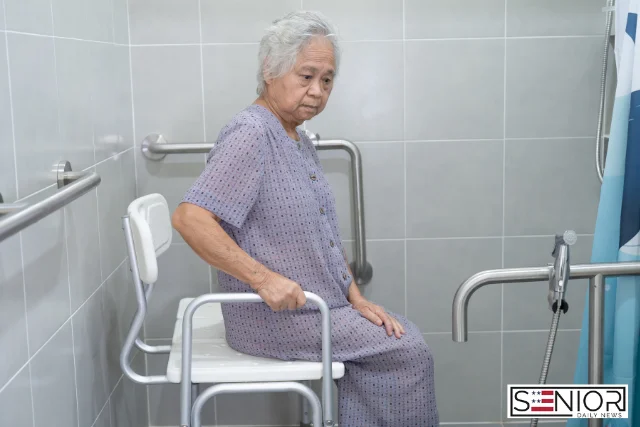Feel Better, Move More: Exercise Tips for Seniors with Chronic Joint Pain

Staying active as we age can feel like a challenge—especially when joint pain becomes part of daily life. But here’s the truth: gentle, regular movement is one of the most powerful tools for managing chronic joint pain in seniors. Exercise not only helps maintain flexibility, strength, and balance but can also reduce inflammation and support overall joint health.
If you’re a senior struggling with joint pain, don’t worry. You don’t need to hit the gym hard or sign up for a marathon. There are plenty of safe, low-impact exercises that can help you feel better, move more, and stay independent for longer.
Why Exercise Is Important for Seniors with Joint Pain
Joint pain can lead to stiffness, reduced mobility, and fatigue. But avoiding movement often makes the problem worse. Regular low-impact exercise helps:
- Reduce stiffness and improve range of motion
- Strengthen muscles that support joints
- Improve balance and coordination, reducing the risk of falls
- Enhance circulation, delivering nutrients to joints
- Boost mood and energy levels
Exercise acts like lubrication for your joints. The more you move (safely), the better your joints function.
Getting Started: What to Keep in Mind
Before beginning any new fitness routine, always check with your healthcare provider—especially if you have arthritis, osteoporosis, or a previous injury.
Keep these tips in mind:
- Start slow: Build up gradually in time and intensity.
- Use proper footwear: Supportive, cushioned shoes protect joints.
- Listen to your body: If something causes sharp pain, stop and adjust.
- Warm-up and cool down: Gentle stretches before and after help prevent strain.
Best Low-Impact Exercises for Seniors with Chronic Joint Pain
1. Walking
Walking is a fantastic, joint-friendly way to stay active. It helps strengthen muscles around the hips and knees, promotes cardiovascular health, and can be done almost anywhere.
Tip: Start with short walks around your neighborhood or a mall. Use a cane or walker if needed.
2. Water Aerobics & Swimming
Water workouts are incredibly gentle on the joints because water supports body weight, reducing impact. Swimming, water walking, and gentle aqua aerobics are great options.
Why it helps: The resistance of water builds strength while reducing joint stress.
3. Chair Exercises
If mobility is limited, chair exercises are a great place to start. These movements can improve circulation, flexibility, and strength without the need to stand.
Try: Seated leg lifts, arm circles, or gentle stretches.
4. Tai Chi
This slow, flowing martial art combines movement, balance, and breathing. It’s excellent for joint mobility, posture, and mental focus.
Bonus: Tai Chi has been shown to reduce fall risk in older adults.
5. Yoga for Seniors
Gentle yoga can increase flexibility, strengthen joints, and improve balance. Look for classes specifically designed for seniors or those with joint issues.
Note: Avoid poses that put too much strain on knees or wrists.
6. Cycling (Stationary or Outdoor)
A stationary bike offers cardiovascular benefits without jarring impact. It can also strengthen leg muscles that support the hips and knees.
Caution: Start with low resistance and short sessions.
7. Stretching and Range-of-Motion Exercises
Daily stretching keeps joints flexible and reduces stiffness. Include stretches for all major joints—shoulders, hips, knees, and ankles.
Helpful tip: Use a towel or strap to assist with gentle stretches.
Tips to Stay Consistent
- Set a schedule: Make exercise part of your daily routine.
- Track progress: Even small wins help build momentum.
- Find a buddy: Exercising with a friend adds motivation and fun.
- Join a class: Senior fitness classes provide guidance and social connection.
Managing Flare-Ups
It’s common to have days when joint pain flares up. On these days:
- Choose gentle movement like stretching or slow walking.
- Apply heat before activity and cold afterward to soothe joints.
- Rest if pain is severe, but try not to skip all movement.
Foods That Support Joint Health
While not a substitute for exercise, your diet also plays a role in joint pain management:
- Omega-3s (found in salmon, walnuts, flaxseed) reduce inflammation
- Antioxidants (berries, spinach, kale) protect joint tissue
- Vitamin D and calcium (dairy, fortified foods) support bone strength
When to Seek Help
If joint pain worsens with activity or limits your ability to perform daily tasks, talk to your doctor or a physical therapist. They can tailor an exercise plan that meets your needs.
You don’t have to live in pain or fear movement. With the right approach, you can stay strong, flexible, and independent.
FAQs: Exercise and Joint Pain in Seniors
Q1: Is it safe to exercise if I have arthritis?
Yes, in fact, gentle exercise is one of the best treatments for arthritis. Low-impact activities help improve joint function and reduce pain over time.
Q2: How often should I exercise to relieve joint pain?
Aim for at least 150 minutes of moderate activity per week, broken into short daily sessions. Even 10-minute sessions add up!
Q3: What should I avoid when exercising with joint pain?
Avoid high-impact activities like jumping or running on hard surfaces. Listen to your body and avoid any movement that causes sharp or sudden pain.
Q4: Are there specific exercises I should do for knee joint pain?
Yes. Focus on strengthening the muscles around your knees, like your quadriceps and hamstrings. Try seated leg extensions, gentle cycling, or walking on soft surfaces.
Q5: Can I still benefit from exercise if I have limited mobility?
Absolutely. Chair exercises, water therapy, and stretching can help improve circulation, reduce stiffness, and boost your energy.
Image Source: Canva






